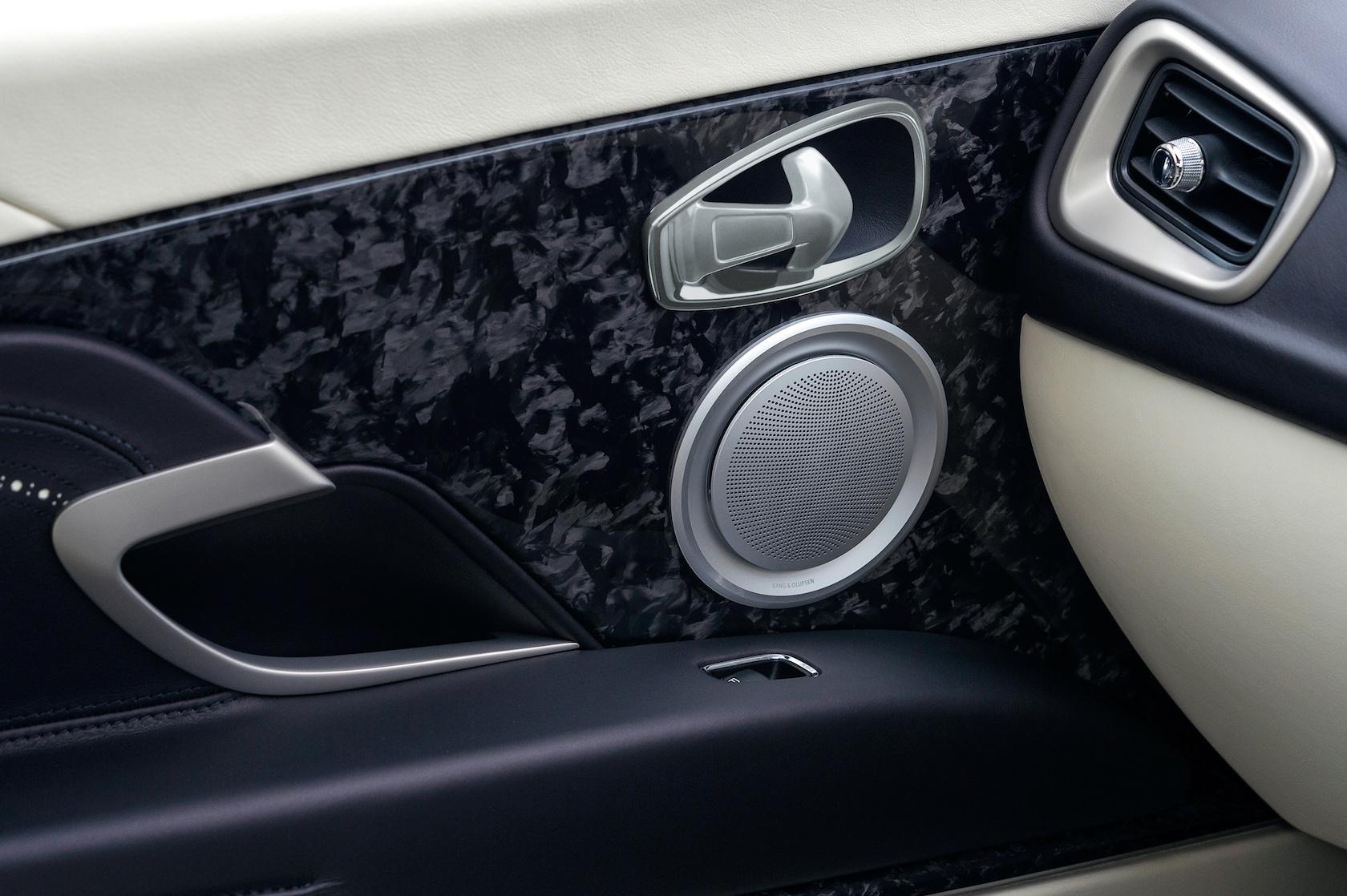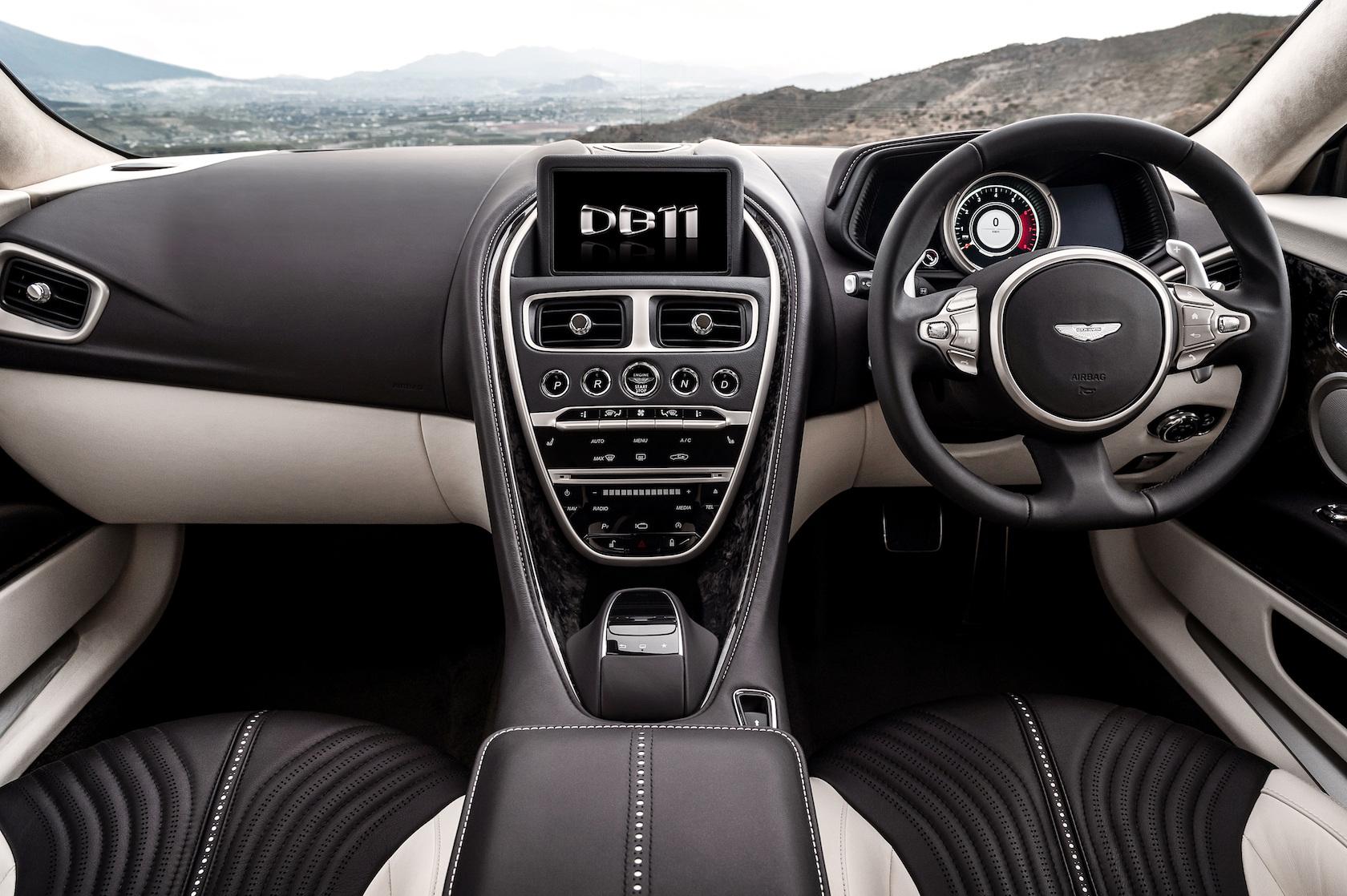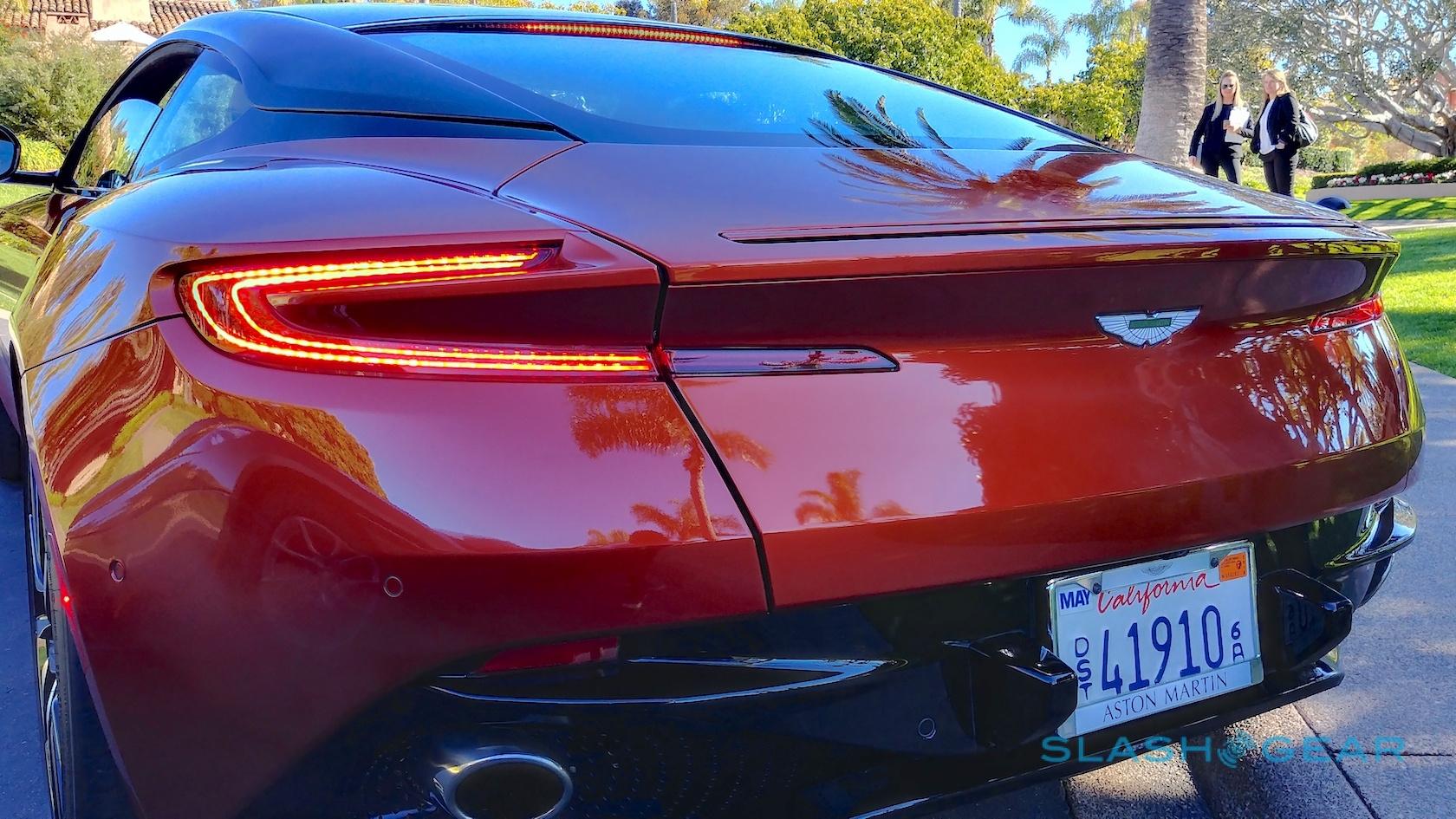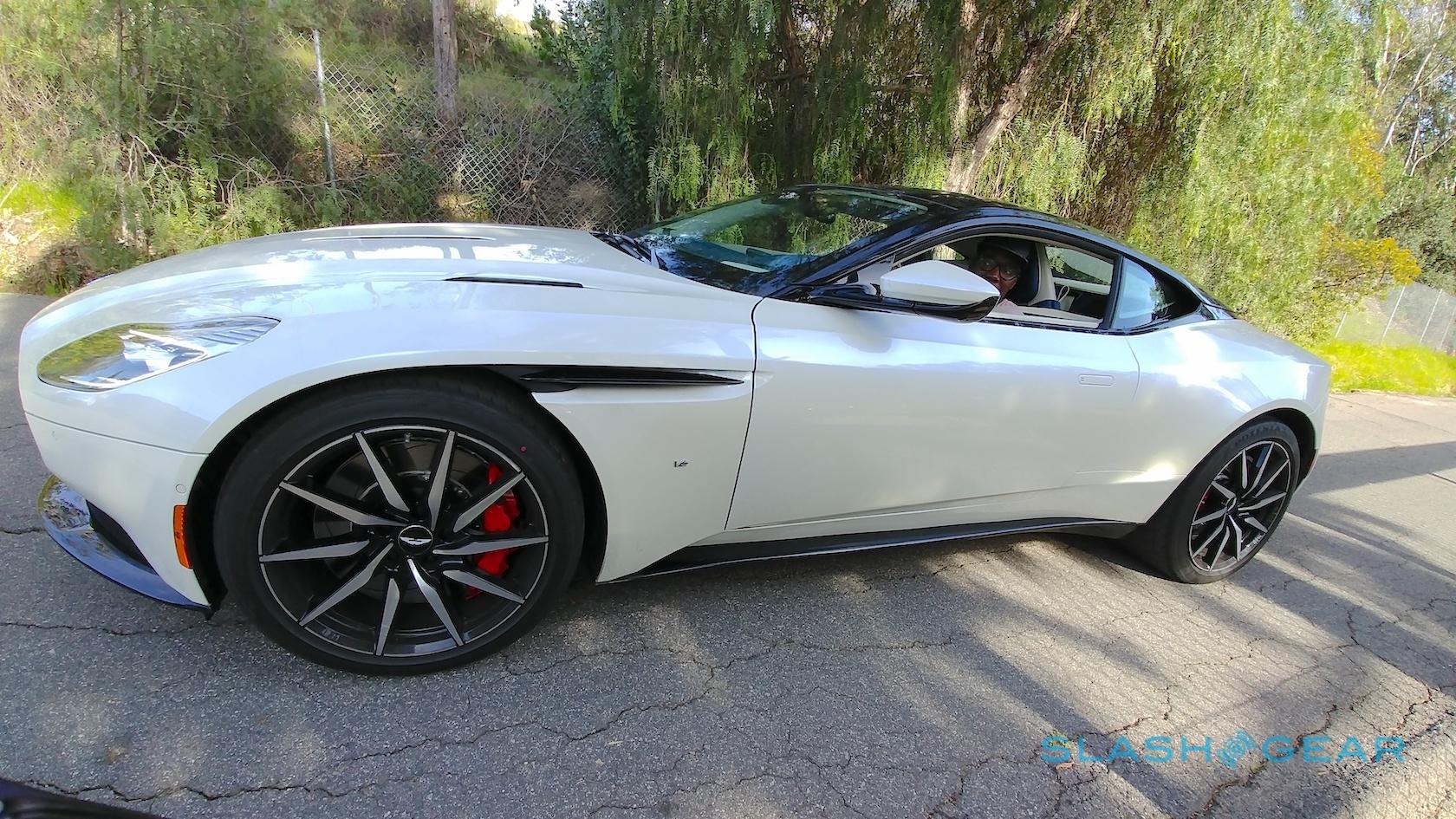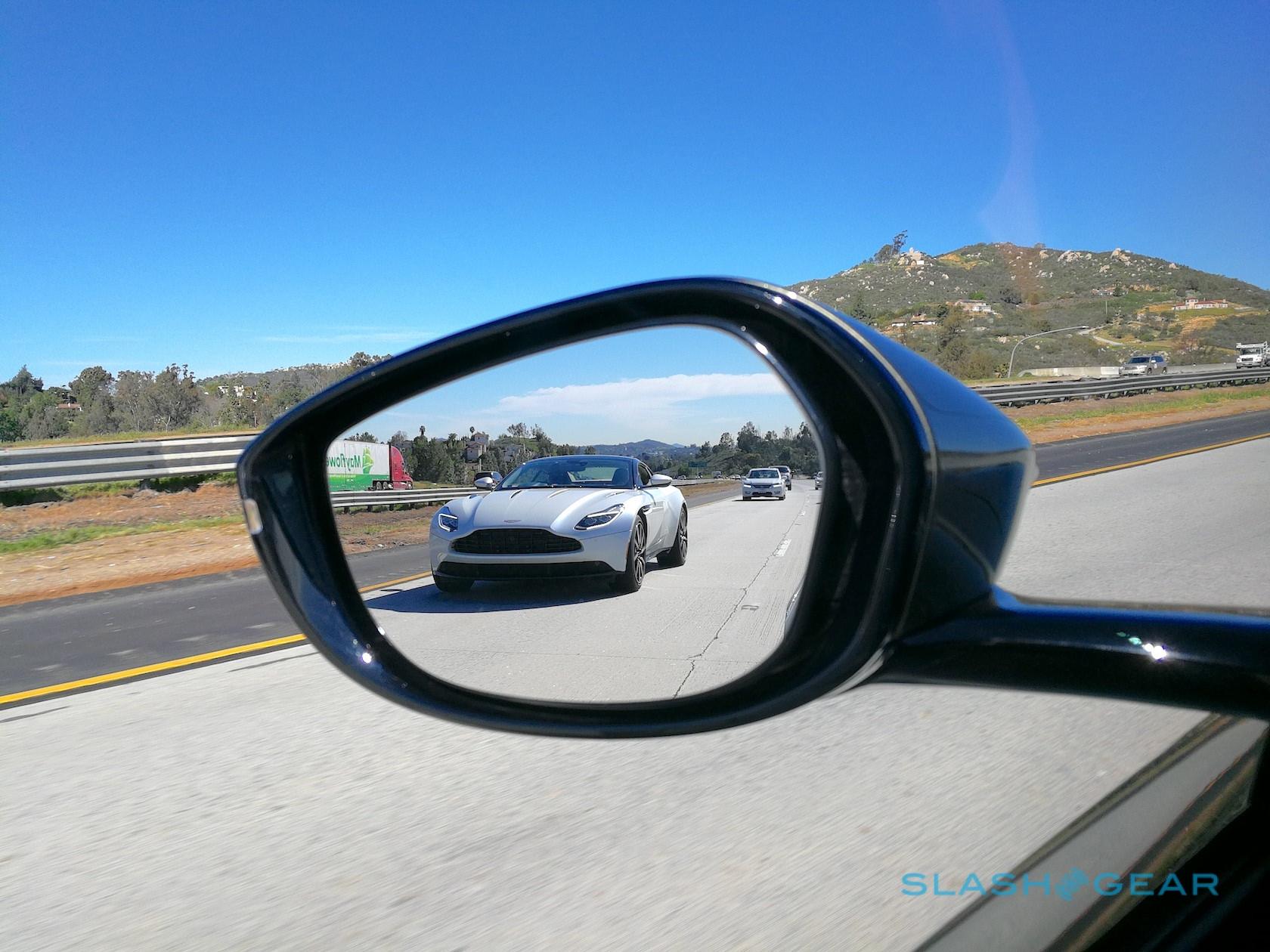The 2017 Aston Martin DB11 Is Unlike Any Other Gran Tourismo
It's rare that a car stuns me into silence, but then again there are few cars quite like the new Aston Martin DB11. The storied British automaker has decided it's due a reinvention, and this is the coupe it's chosen to spearhead that process. It's a Gran Turismo in both the classic sense of an elegant long-distance tourer, but also according to the modern definition of a car that possesses both organ-melting performance and superlative comfort, with no compromise along the way. Or, for shorthand, a car that wows.
In the 2017 DB11's case, that wow-ness consists of an elegant exterior design, a perfectly tuned 12-cyclinder with an output of 600 horsepower and 516 lb-ft. of torque, and an interior so meticulously crafted it's fit for a prince – or, of course, James Bond. The 007 connection can't be avoided when you're talking about Aston, but for a few lucky hours I got to play secret agent on a Very Important mission. I wasn't saving the world, though, just trying to keep my driving license intact when faced with the temptation of a biturbo 5.2-liter.
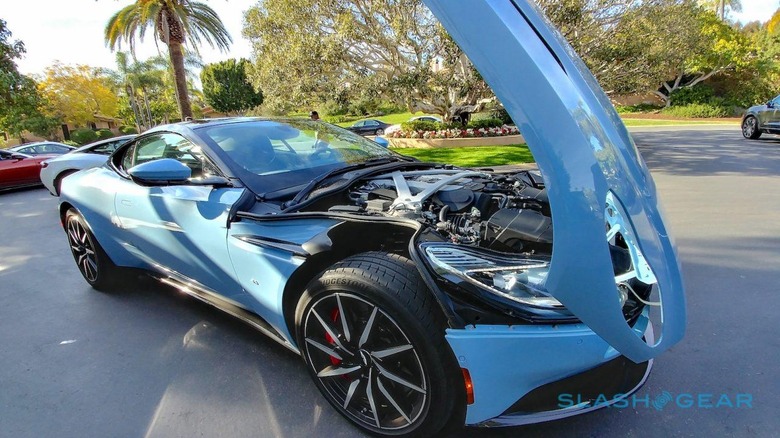
The DB11 is the first model from Aston Martin's "Second Century" platform. It replaces the DB9, a car which dates back all the way to 2003, and which used the VH – or "vertical/horizontal" – platform that also underpinned the Rapide four-door, Vanquish, and Vantage. It's a huge investment for the British car firm, and the stakes are high: this is what Aston Martin models for some years to come will be based on.
That's the future; the DB11 is the present, and if you're very lucky you might see one up close. Turns out I was beyond lucky; just as I was about to carefully climb into the passenger seat, yielding the first leg of the drive to my drive partner, out of the corner of my eye I spotted a DB11 sitting blasphemously idle. So I did what any reasonable guy would do in this situation, and politely asked if I might take the unoccupied DB11 out on my own. A "yes" has never sounded so sweet to my ears than that unexpected moment.

I was the last to depart and it didn't concern me one iota, feeling blessed and grateful to be behind the wheel of one of the most perfectly designed gran tourismo ever built. Hand-crafted in Aston's factory in Gaydon, England, the twin-turbocharged 5.2-liter V12 engine roars to life with a push of a button.
This is the heart and soul of the DB11 so I'll start here and work outwards. It takes a mere 3.9 seconds to go from 0-60, with a top speed of 200 mph. "The V12 is really like two V6 engines," says head of R&D and chief engineer Ian Minards. Thanks to clever cylinder deactivation, in casual driving or when you're stuck, cursing, in traffic, the DB11 operates as a V6. The powertrain is 25-percent more efficient thanks to automatic start/stop, along with from cyclinder deactivation under light load. The DB11 balances itself out automatically, with the cylinder banks coming on and off depending on factors like catalyst temperature.

Some nod toward frugality from your supercar is a fact of automotive life these days, but stunning design remains a luxury. Marek Reichman, Aston's chief creative officer and head of design, told me that proportion had been the primary focus. "We stand for beautiful cars, and beauty is very much about proportion," he explained. "It's two-thirds to one-third with the bonnet."
Indeed, the DB11's clamshell hood is the largest on a production sports car, with Minards later spilling a detail that Reichman had insisted on the hood's length, above all else. Underneath it rests the new engine, right between the front axle and the firewall, and pushing the cab far, far back. Power is passed through to the rear axle via an 8-speed ZF torque-converter transaxle.

Up front, the grille anchors the aesthetic. "[It's] our most powerful grille to date, it emphasizes s-curvature more than any, even going back to DB4s and DB5s," Reichman says. "The grille gives the impression of form at the front of the car." It's emphasized by the practically invisible shut-lines, which I'm particularly impressed by; the massive hood tapers down into the front-quarter panels, without ugly gaps marring its sculpted surface.
As aerodynamic modeling has improved over the past decade, and the performance delta at the top end of the supercar tree narrow, we've seen an industry shift away from simple purity of design. The Aston Martin certainly isn't short on aero work – concealed vents under the distinctive side-strakes help keep the front end from lifting at high speed, for instance, with a team led by Darren Coe designing the so-called "Curlicue" vent which releases high pressure air from under the front fenders – but it doesn't leave the DB11 looking like it's trying to ape a fighter jet. That cohesiveness of form and function continues at the rear, where a gorgeous – but practical – AeroBlade spoiler is found, helping prevent tail-lift.
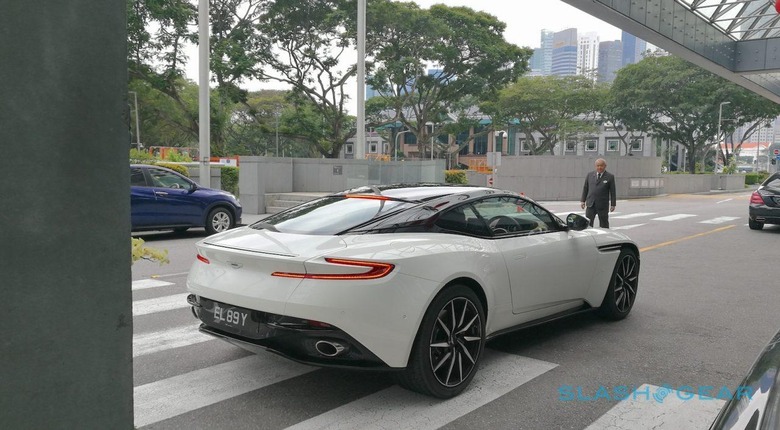
Personally, I can't think of single angle of the DB11 that's not great looking. All the same, if I was forced to pick my favorite, it'd be the rear. "We didn't want to spoil the design, [but] we did want to spoil the air," Reichman says. Instead, an aero-blade does additional work to ensure that a physical wing isn't needed. Air is channeled from the base of the C-pillars through openings under the wheel arches, with patented "veins" that help reduce air pressure there. It's efficient enough that the DB11 can get to around 90 mph before a tiny lip spoiler pops out to contribute to the downforce.
Then there's the detailing. The all-new LED head and tail-lights are every bit Aston Martin, but brought bang up to date. The iconic grille is flanked with adaptive lamps that twist at lower speeds to help with cornering, while the signature daytime running lights are functional while still giving the car a bold fascia. From the rear three-quarter view, the way the cut of the side-strakes trails back from the wheel arches is echoed by the floating C-pillar, a horizontal contrast that only serves to emphasize the curves of the car.

The DB11 boasts Aston Martin's stiffest body structure ever, and the new chassis promises the best of Aston's dynamics. Compared to the DB9, its 4,194 pound curb weight is 44 pounds lighter, while it's also 1.18 inches longer and endowed with an extra 2.56-inches of wheelbase. Minards says former Lotus engineer Matt Becker is to be given credit for adapting the car to Aston's DNA and architecture, something that's telegraphed no matter which of the three suspension modes – Normal, Sport, and Sport Plus – you've selected.
To go with that choice, there are three powertrain modes. First up is Normal, then Sport, and finally what Aston calls "GT" or Sport Plus mode. I found that, during my not-long-enough drive day with the DB11, Sport proved to be the best mode for the suspension. This is, after all, a cruiser, but that doesn't mean it can't handle a track with the best of the best. That's where Sport Plus would be the best option, of course, but for everyday driving its razer-rapid throttle response felt just that little too aggressive.
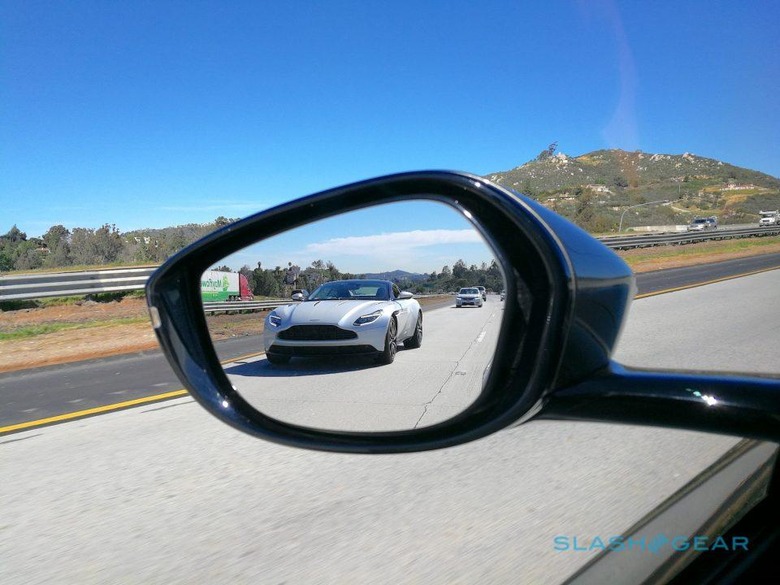
Peak torque arrives between 1,500 and 5,000 rpm, with maximum power at 6,500 rpm. Acceleration is, frankly, instantaneous. Turbo lag? What turbo lag? The DB11 is fast and ferocious, perpetually eager not only to take you via the scenic route but do its utmost to break land-speed records along the way. If you're not careful, "going to jail" speeds arrive with terrifying ease. Happily the Bilstein shocks and sizable Brembo brakes keep the car composed, even when you're shedding speed with extreme urgency. Slicing through canyon roads, Track mode kept the electronic nannying at bay until absolutely necessary – which I'm going to define as "when someone else's $214k+ supercar starts making motions toward the edge of the road" – while Normal mode proved a far tamer cruising experience around town.
Whichever you pick, the exhaust note is as pure as the handstitched interior. The sounds it produces are music to the ears – Aston Martin clearly thinks so too, as they've left its music unfettered with electronic assistance or amplification – though, should it be too loud for the neighbors, there's a switch to flip it into suburb-friendly quiet mode.
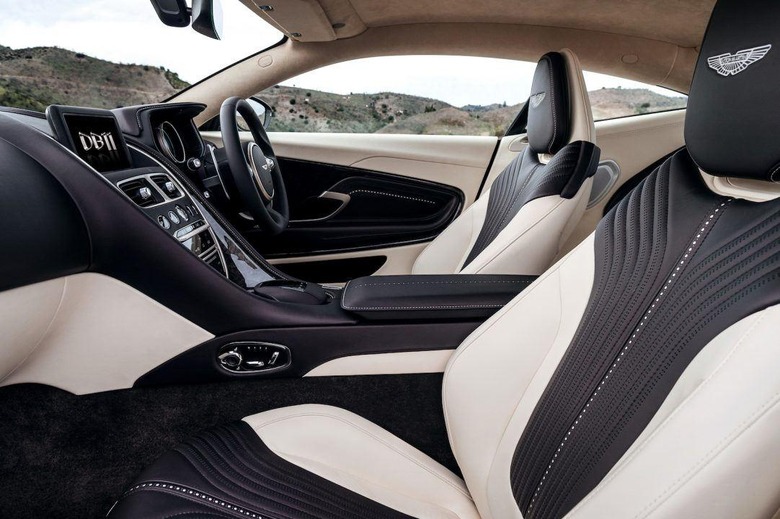
Depending on how you order it, the DB11's interior could take up to 100 hours to complete. The seats are hand-assembled from the base on up, while all the stitching on each individual car is done by a single seamstress. You can, I'm told, tell whether they're right or left handed, based on the angle of the seams. Plastic is shunned for the most part in favor of metal, glass, leather, and Alcantara.
Importantly, Aston Martin's partnership with Daimler saves the DB11 from the automaker's primary area of weakness: its electrical architecture and in-cabin infotainment. As part of the deal, Aston gets the excellent Mercedes-AMG core systems, which are greatly revised and "Astonized". Purists might decry the Mercedes switchgear, but there's no denying that it feels premium and, vitally, a considerable step up from the aging dashboard of the DB9.

The world is not short of grand tourers for those with deep pockets. Neither is there really a "bad" choice; for me, success comes down to the cohesiveness of the car overall. That blend of style, and performance, and cabin quality, and how comfortably all three factors sit with the core identity of the brand. Though the 2017 DB11 has capable and compelling rivals, I'm not sure any of them quite complete that equation with such finesse. If I'm quiet, it's because this thoroughly modern GT cruiser says everything that needs to be said.


